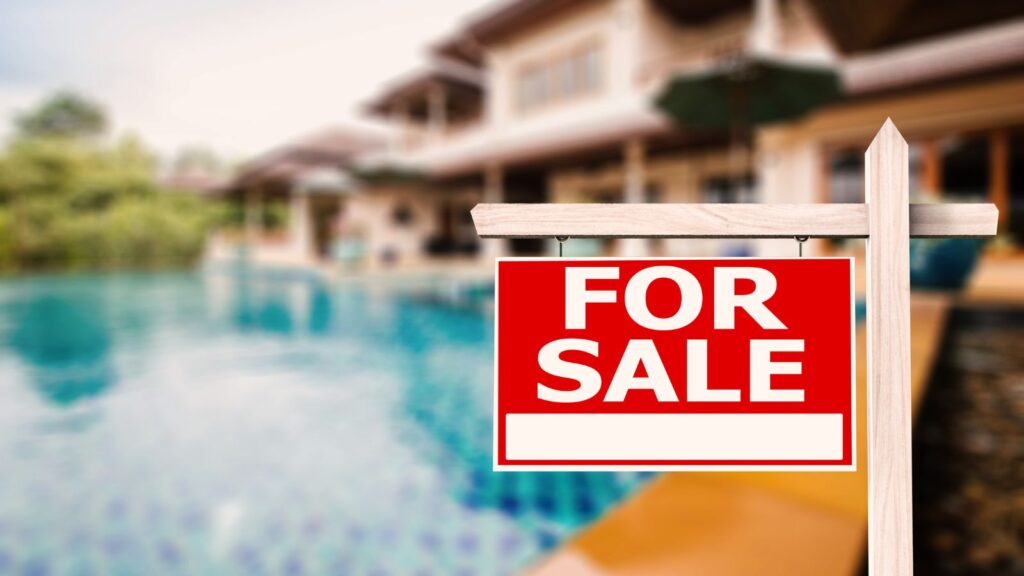Selling a home involves many decisions, each impacting the final outcome. From setting the right price to preparing for showings, each step contributes to attracting the best offers. Understanding the process helps streamline decisions and minimize stress. Whether selling for the first time or moving on from a home filled with memories, a well-planned approach ensures a smooth transition. With the right strategy and preparation, sellers can maximize their home’s value and attract serious buyers.

Determining the Right Price
Pricing a home correctly is one of the most important decisions in the selling process. Setting the price too high can lead to extended time on the market, while pricing too low may leave money on the table. A competitive price attracts buyers quickly and can even lead to multiple offers. Market research is essential, and a comparative market analysis (CMA) provides insight into what similar homes in the area have recently sold for. This analysis includes factors such as location, square footage, recent upgrades, and market trends.
Market conditions also play a key role in pricing. In a seller’s market, where demand exceeds supply, homes often sell for more than the asking price. In a buyer’s market, pricing competitively is necessary to stand out among available listings. Understanding these conditions helps determine a strategy that balances market demand with the home’s unique features.
Strategic pricing is about more than just numbers—it’s about perception. A well-priced home generates interest, leading to strong offers. Pricing just below a major threshold, such as $499,900 instead of $500,000, can make a listing more attractive in searches. Staying flexible and open to feedback from showings can also lead to necessary adjustments. The right price sets the foundation for a successful sale.
Preparing the Home for Sale
First impressions matter, and a well-prepared home attracts buyers and increases perceived value. Decluttering and depersonalizing create a neutral space, allowing potential buyers to envision themselves living there. Removing excess furniture, family photos, and personal collections makes the home feel more spacious and welcoming.
Repairs and minor upgrades can also make a difference. Addressing visible issues such as chipped paint, leaky faucets, or outdated fixtures enhances the home’s appeal. A fresh coat of neutral-colored paint and well-maintained landscaping create a positive first impression. Small investments in lighting, hardware, and curb appeal can yield significant returns.
Staging further enhances the home’s presentation. Arranging furniture to highlight space and functionality helps buyers connect emotionally. Well-lit rooms with tasteful décor create a warm and inviting atmosphere. For vacant homes, professional staging may be worth considering to showcase the property’s potential. The goal is to present a home that feels move-in ready and visually appealing, increasing the likelihood of strong offers.
Marketing to the Right Buyers
Effective marketing reaches the right audience and generates interest. High-quality photos and videos showcase the home’s best features and help listings stand out. Professional photography ensures well-lit, high-resolution images that highlight key selling points, while virtual tours provide an immersive experience for buyers unable to visit in person.
An online presence is essential. Listings should be featured on major real estate websites and social media platforms where buyers actively search. Targeted advertising increases exposure, ensuring the home reaches those most likely to be interested. A compelling listing description highlighting unique features and neighborhood benefits helps capture attention.
Traditional marketing methods also play a role. Yard signs, brochures, and open houses bring in local buyers. Networking with real estate professionals expands the reach, increasing the likelihood of finding a motivated buyer. The combination of digital and traditional strategies ensures maximum visibility, attracting serious inquiries and competitive offers.
Handling Showings and Open Houses
Once the home is listed, making it accessible for showings is key. A clean, well-maintained space allows buyers to explore freely and envision themselves living there. Keeping the home tidy, with minimal clutter, helps create a positive impression during both scheduled showings and last-minute visits.
Flexibility with showing times increases opportunities to attract buyers. Weekends and evenings are popular times for home tours, so accommodating these preferences can make a difference. Leaving the home during showings allows buyers to feel comfortable exploring and discussing the property openly. Soft lighting, pleasant scents, and background music create a welcoming environment.
Open houses provide additional exposure. A well-promoted open house attracts multiple buyers at once, creating a sense of urgency. Providing informational packets with details about the home, local schools, and amenities helps buyers make informed decisions. Positive experiences during showings and open houses increase the chances of receiving strong offers.
Reviewing and Negotiating Offers
Once offers start coming in, reviewing them carefully ensures the best possible outcome. Price is a major factor, but terms, contingencies, and closing timelines also matter. A higher offer with complex contingencies may not always be the best choice.
Evaluating the buyer’s financial position is important. Pre-approved buyers are more likely to close successfully, reducing the risk of delays or financing issues. Offers with fewer contingencies, such as waived inspections or flexible closing dates, can be more attractive. A clear understanding of each offer’s strengths and potential risks helps in making informed decisions.
Negotiation is part of the process. Counteroffers allow adjustments to price, closing costs, or other terms. A strategic approach ensures favorable conditions while maintaining buyer interest. Finding a balance that benefits both parties increases the likelihood of a successful sale.
Navigating the Inspection and Appraisal
Once an offer is accepted, the inspection and appraisal process begins. The home inspection allows the buyer to assess the property’s condition. Addressing minor repairs beforehand can prevent surprises and keep negotiations smooth.
If issues arise during the inspection, renegotiation may be necessary. Based on the findings, buyers may request repairs or price adjustments. Being prepared to address reasonable concerns helps maintain momentum. Major issues could lead to further negotiation or, in some cases, require finding a new buyer.
The appraisal determines the home’s market value. Lenders require this step to ensure the loan amount aligns with the home’s worth. If the appraisal is lower than the offer price, renegotiation may be necessary. Comparable sales data and being prepared to discuss valuation help resolve discrepancies. Successful navigation of this stage brings the sale closer to completion.
Finalizing the Closing Process
The closing process involves finalizing paperwork and preparing for the transfer of ownership. Title searches ensure there are no legal issues with the property, and any outstanding liens or disputes must be resolved before closing.
Buyers typically conduct a final walkthrough before closing. This confirms that agreed-upon repairs have been made and the property is in the expected condition. Ensuring the home is clean and move-out ready leaves a positive last impression.
Closing day involves signing the necessary documents, including the deed transfer and financial paperwork. Once finalized, funds are transferred, and ownership is officially handed over. A smooth closing ensures the successful completion of the home sale, allowing sellers to move forward with confidence.
Moving Forward with Your Sale
Selling a home is a major milestone, and the right approach ensures a successful outcome. From pricing and preparation to marketing and negotiations, each step plays a role in attracting buyers and securing the best offer. A well-planned strategy minimizes stress and maximizes value. If you’re ready to sell, reach out to discuss the next steps and make your home sale a success.

